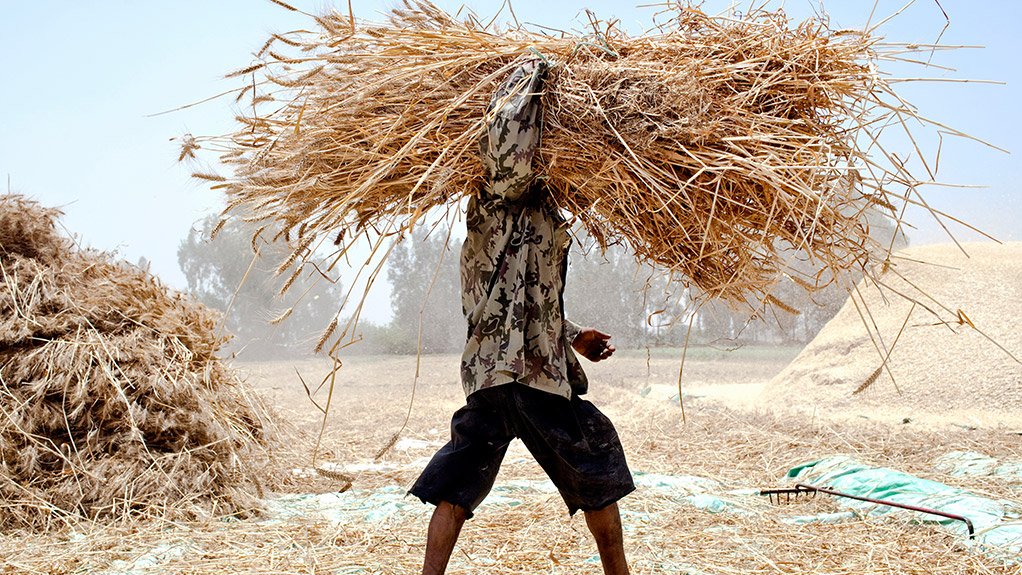As the growth gap between developing and advanced economies was closing, productivity improvements and structural growth were the only things that could, once again, accelerate economic growth in emerging markets, global information company IHS economics and country risk VP Zbyszko Tabernacki said on Wednesday.
Speaking at an IHS Africa Economic Outlook conference, in Johannesburg, he pointed out that the growth of the global economy was accelerating, led by a recovery in developed markets.
“[However], against this recovery in developed markets, we see significant stagnation in the emerging world,” he said, noting that the US, the UK and Germany were growing at a faster rate than Brazil and Russia this year.
“In fact, the difference between growth rates in emerging markets as a whole and the developed markets this year will be the lowest that we have seen in 20 years,” he stated.
Tabernacki added that the difference in growth between the emerging and developed world would continue to decrease, as emerging economies were finding it more difficult to find critical drivers of future growth.
He said that, for emerging economies, the era of easy credit had come to an end, the commodity super-cycle was over, globalisation had slowed and there was no decoupling of the growth of emerging and advanced economies, which meant that, with the exception of China, the impact of the recession was clearly felt by the developing world.
“We have learned that some of the easy ways of boosting growth rates may not be there anymore; even China will not be growing at 10% or 11% in future,” but growth was rather expected to stabilise at around 7.3% or 7.5%, he said, stating that, therefore, structural reforms would have to be implemented to boost domestic markets.
“Productivity improvements and structural growth are the only things that would accelerate growth in emerging markets going forward,” he said.
Tabernacki emphasised that emerging markets would not enjoy another boom without stronger production growth, which would also have to come from a wider base and could, therefore, not only be based on commodities.
However, IHS head of sub-Saharan Africa economic analysis Dr Karanta Kalley pointed out that, despite the slowing growth in emerging economies, six of the world’s ten fastest growing economies were still located in sub-Saharan Africa, which posed the question of how sustainable this growth was.
He stated that, to evaluate the sustainability of a country’s growth, the IHS focused on five critical factors – the source of the growth, exports, fiscal and external balances, the level of transformation of an economy and socioeconomic development.
Expanding on this, IHS principal economist on South Africa Ronel Oberholzer said that, in South Africa in particular, with regards to socioeconomic development, poverty and inequality had improved. However, over the longer term, these improvements were expected to flatten, but would, nevertheless, remain above the levels seen in other middle-income countries.
She added that South Africa also had the potential to expand its export market, which would accelerate growth, stating, however, that the country’s biggest problem was that it was still “basically a commodity exporter”, which meant that diversification would also have to take place.
Oberholzer also noted that there was a large gap between labour costs, which were high, and productivity, which would have to be dealt with to achieve optimal growth.
Meanwhile, IHS senior economist Thea Fourie emphasised the importance of the manufacturing sector in ensuring that sub-Saharan Africa’s growth remained sustainable.
She noted that manufacturing currently only made up 11% of sub-Saharan Africa’s gross domestic product (GDP), compared with 20% during the mid-1970s, while services now played a bigger role at 60% of GDP, compared with 40% in the mid-1970s.
This was significant as services was a nontrade sector, she said.
In addition, the manufacturing that did take place on the African continent was mostly made up of small amounts of products that had low production growth and no significant growth prospects.
There was also little diversification in manufacturing.
GLOBAL LINK MODEL
The IHS on Wednesday also launched its Global Link Model (GLM), which would enable users to understand the macroeconomic impact of certain scenarios, in the South African market.
The scenario-creation software covered 68 countries, which were collectively responsible for 95% of the global GDP, and linked financial and trade flows and key commodity processes to give a complete view of the direction of a particular economy.
EMAIL THIS ARTICLE SAVE THIS ARTICLE
To subscribe email subscriptions@creamermedia.co.za or click here
To advertise email advertising@creamermedia.co.za or click here











